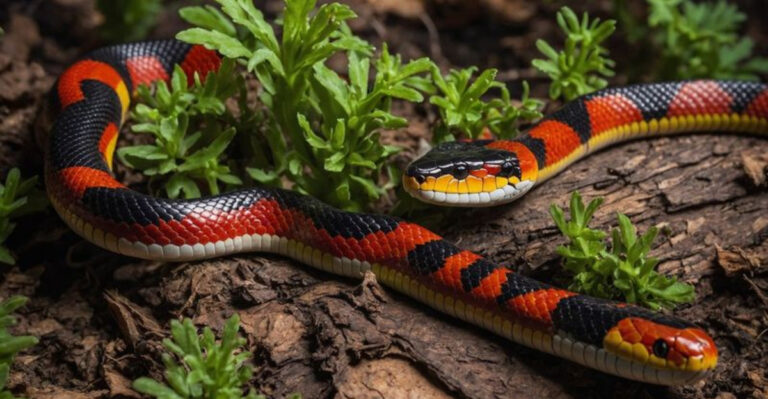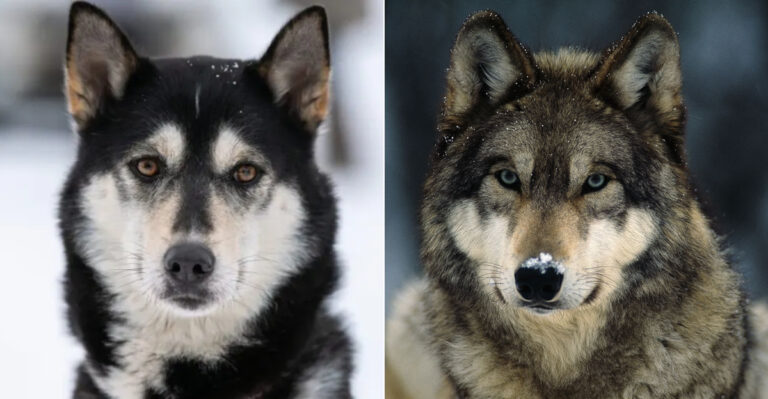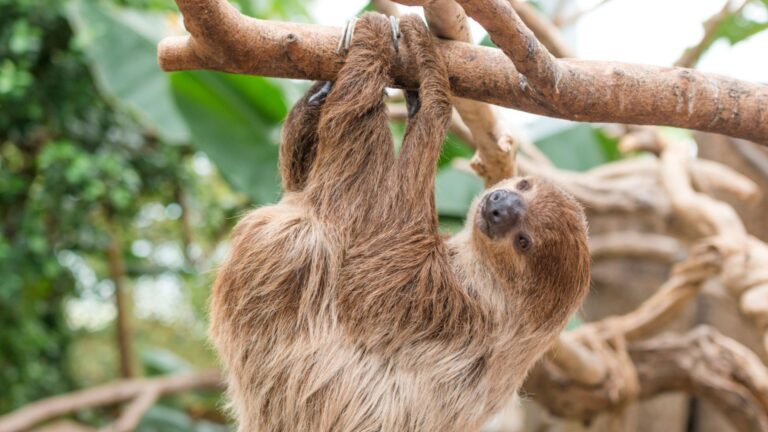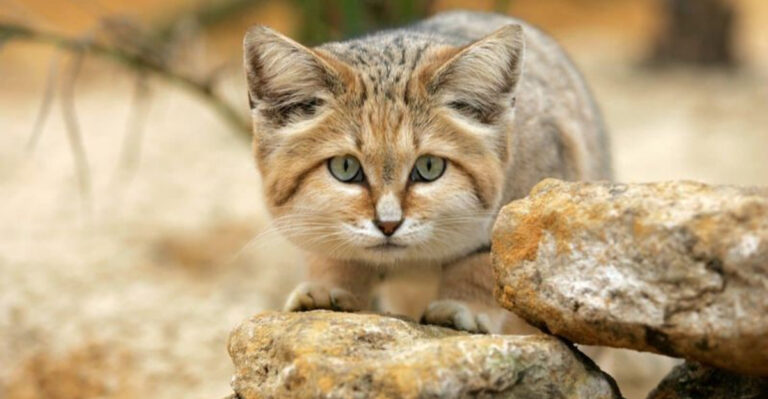Meet The 26 Endangered Animals Fighting To Survive In North America
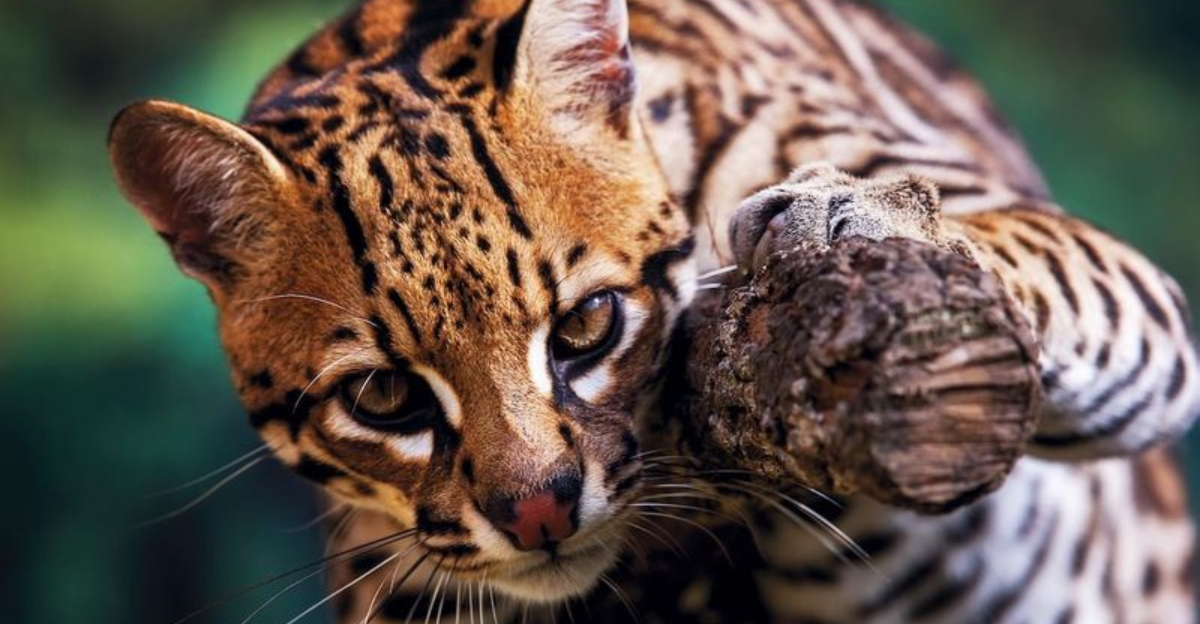
North America is home to an incredible array of wildlife, but many of its animals are now at risk of disappearing forever. Habitat loss, climate change, and human impact have all contributed to the decline of these once-thriving species.
From majestic predators to small, elusive creatures, their futures hang in the balance. Some are on the brink of extinction, while others are already teetering dangerously close.
1. Monarch Butterfly
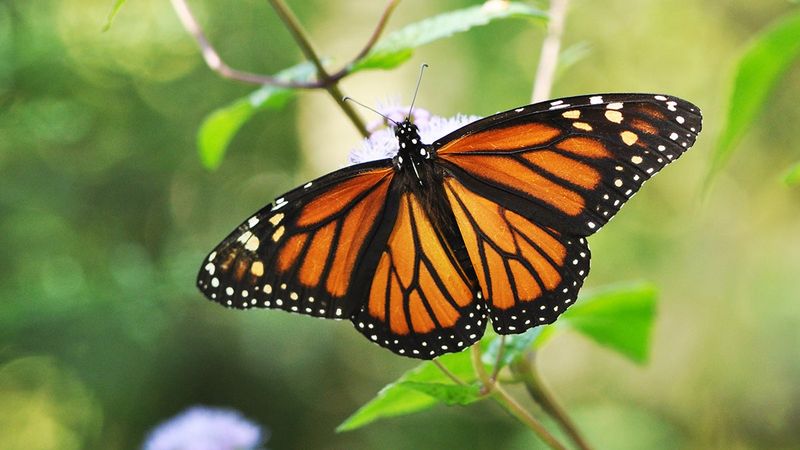
Known for its incredible migration, the Monarch Butterfly travels thousands of miles from Canada and the United States to central Mexico each year. Its vibrant orange and black wings are a familiar sight across gardens and fields.
However, this iconic butterfly is threatened by habitat loss and climate change, which impact its breeding and migratory patterns.
Efforts to plant milkweed, their primary food source during the breeding season, are crucial for their survival. Monarchs are a symbol of transformation and hope, yet they need urgent action to ensure their continued presence in the wild.
2. Mexican Gray Wolf
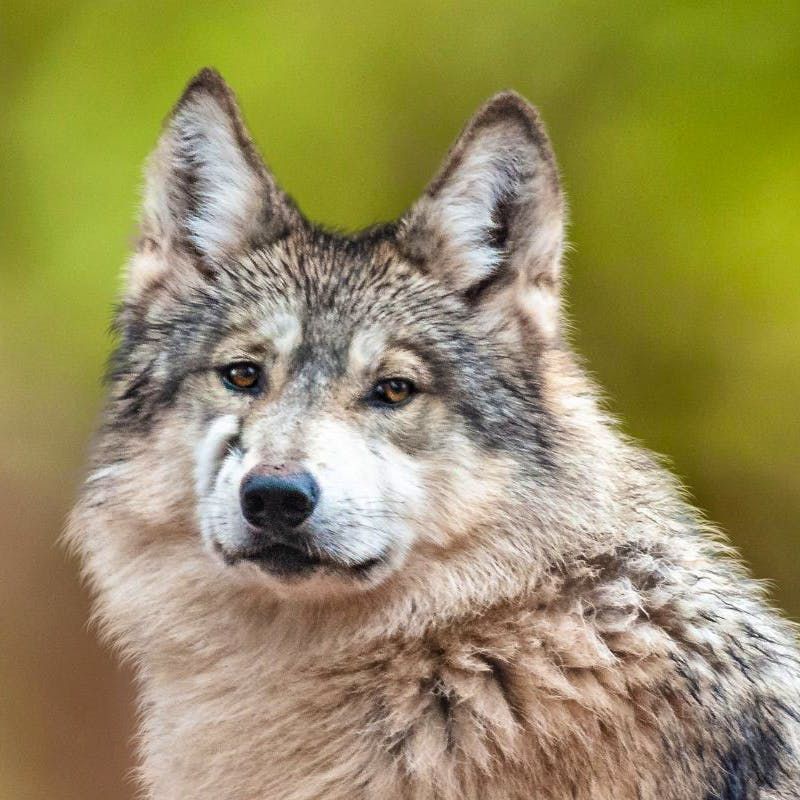
The Mexican Gray Wolf, one of the most endangered mammals in North America, was once widespread across the southwestern United States. Known for their social nature and family bonds, these wolves play a vital role in their ecosystem.
Trapping and hunting led to their near-extinction by the mid-20th century. Reintroduction programs have seen some success, but illegal killings and habitat fragmentation continue to be significant threats.
Wolves are often misunderstood, yet they are essential for maintaining ecological balance. Protecting these magnificent creatures requires concerted efforts and public support.
3. Rice’s Whale
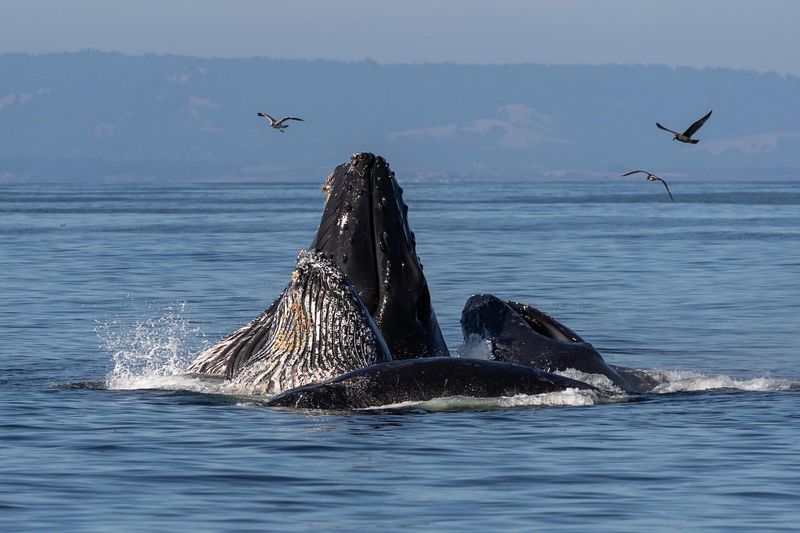
Rice’s Whale, recently recognized as a distinct species, resides primarily in the Gulf of Mexico. This marine mammal, with its streamlined body, faces numerous threats, making it critically endangered.
Pollution from oil spills and chemicals disrupts its habitat, while noise pollution from shipping affects its communication and navigation. The prevalence of oil rigs in its habitat further exacerbates the situation.
However, with a small population, every individual is crucial to the survival of the species, demanding immediate action to secure its future.
4. San Joaquin Kit Fox
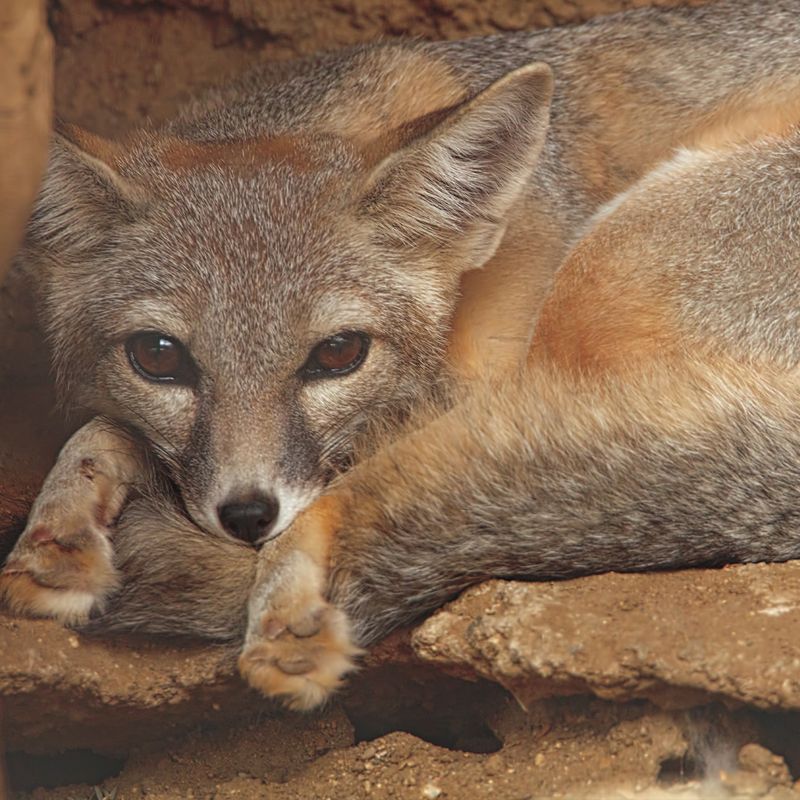
Small and nimble, the San Joaquin Kit Fox is an expert survivor of California’s dry grasslands.
With large ears and a bushy tail, this nocturnal predator once thrived across the San Joaquin Valley but has suffered from habitat fragmentation and agricultural development.
Current estimates suggest there are fewer than 3,000 individuals left in the wild.
Conservation measures, such as protected areas and predator control, are crucial for their continued existence.
5. Ivory-Billed Woodpecker
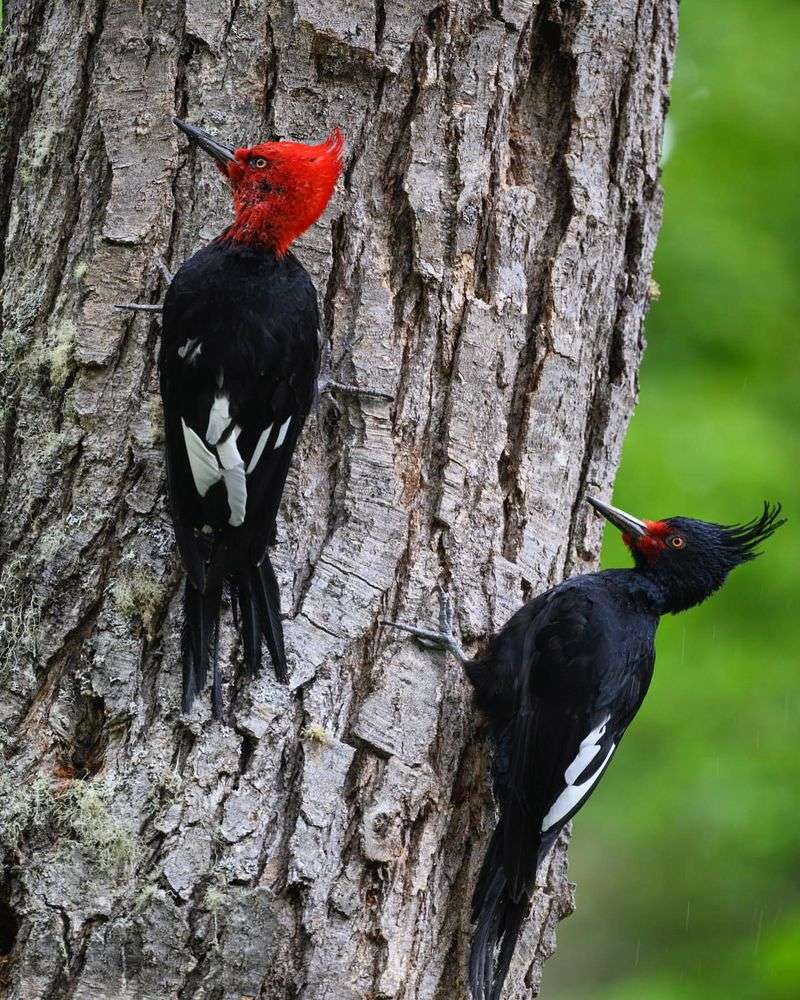
The Ivory-billed Woodpecker, once common in the southeastern U.S., is now critically endangered.
This big, striking bird has black and white feathers and loves living in dense forests.
Logging and urban development have destroyed much of its habitat, making survival tough. It feeds on beetle larvae in dead trees, which are becoming harder to find.
Conservationists are working to protect its remaining home and search for any survivors. Despite efforts, sightings are rare, leading to debates about its extinction.
6. North Atlantic Right Whale
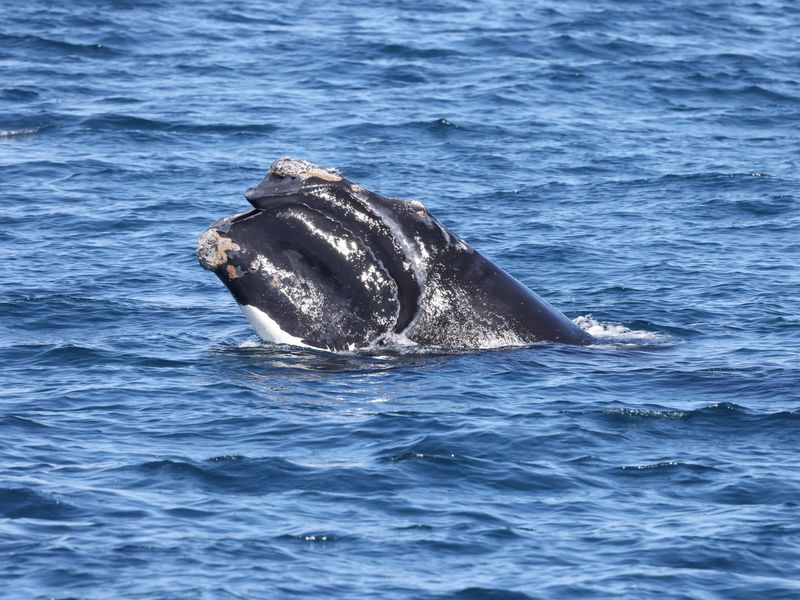
The North Atlantic Right Whale is a magnificent marine giant with a V-shaped blow and no dorsal fin.
These whales live along the eastern coast of North America but are critically endangered.
Ship strikes and fishing gear entanglement are major threats to these gentle giants.
Climate change is also affecting their habitat and food sources, making survival even harder.
Sadly, the population remains dangerously low, with only a few hundred individuals left.
7. California Condor
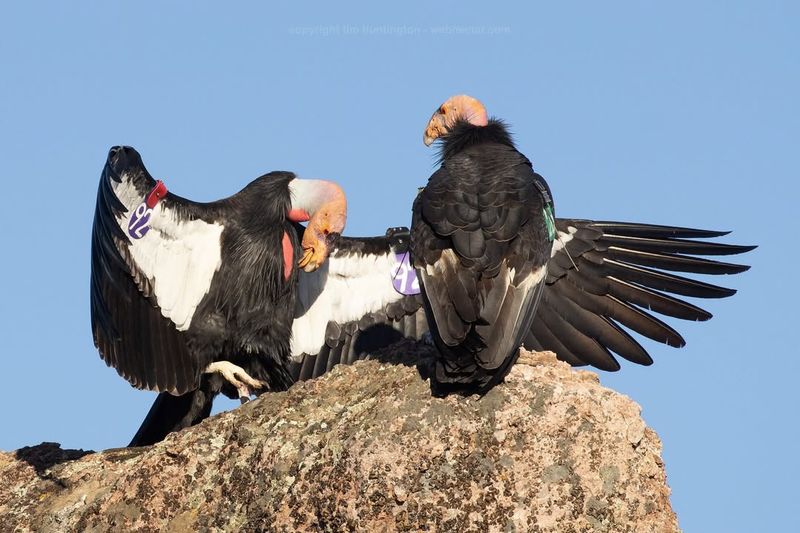
The California Condor, North America’s largest bird, is critically endangered.
With its massive wingspan and striking looks, it once soared across much of the continent but is now confined to a few western areas.
Lead poisoning from eating carrion with spent ammunition is a major threat. Habitat destruction and ingesting microtrash also contribute to its decline.
8. Dusky Gopher Frog
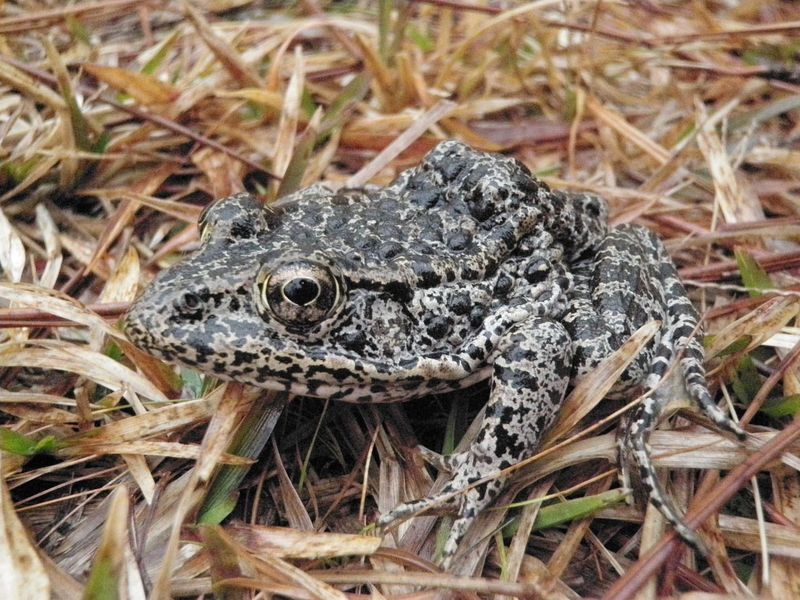
The Dusky Gopher Frog is a small, warty-skinned amphibian that’s critically endangered.
It’s found only in Mississippi, living in a few temporary ponds and nearby longleaf pine forests.
Urban development and forestry practices are destroying its habitat, leaving fewer breeding sites.
Despite these efforts, the population is still critically low. Ongoing protection is essential to ensure the survival of this unique frog.
9. Black-Footed Ferret
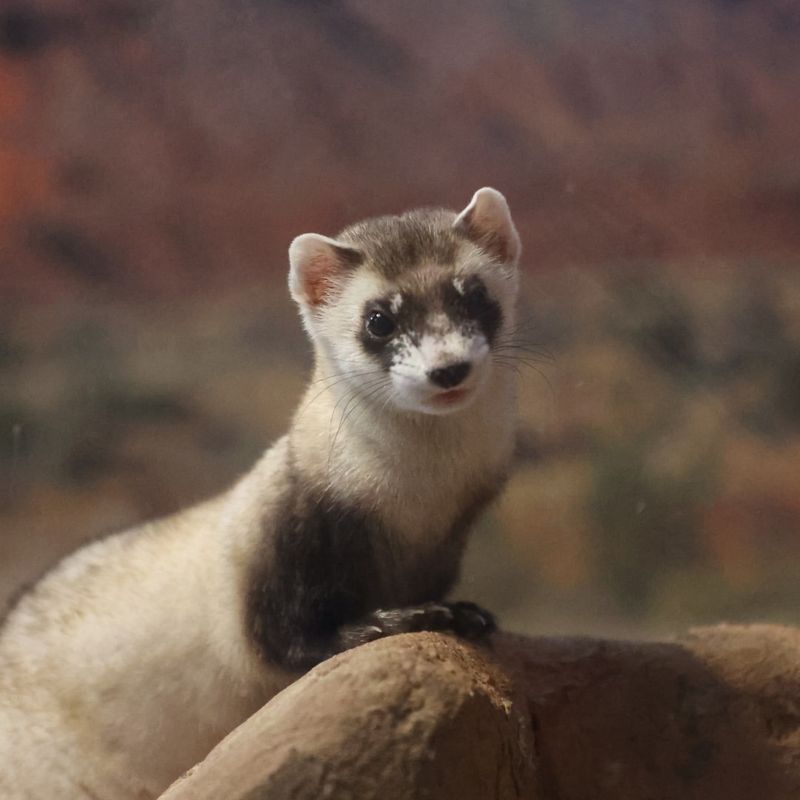
Picture a ferret with a bold black mask and feet, once thought extinct but now critically endangered. The Black-footed Ferret roams North America’s grasslands, relying on prairie dogs for food and shelter.
Agriculture and disease threaten its habitat, making survival a constant challenge. Conservationists are working on breeding programs, disease control, and restoring habitats to help boost the population.
While some progress has been made, the species is still at risk, highlighting the need for continued efforts to secure its future in the wild.
10. Bolson Tortoise
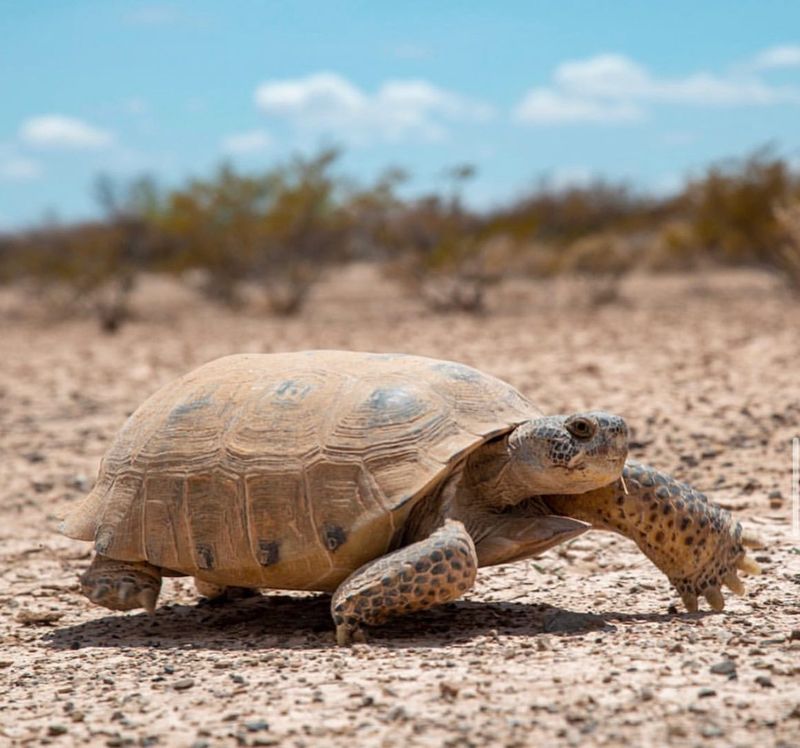
Imagine a tortoise so big it can practically take up your entire backyard.
The Bolson Tortoise used to roam the southwestern U.S. and northern Mexico, but now it’s critically endangered.
This giant loves desert grasslands and relies on burrows to escape the heat, making it a true desert dweller.
Sadly, habitat destruction and illegal collection have put this slowpoke on the brink.
But with such a tiny population left, every tortoise counts for their survival.
11. Vancouver Island Marmot
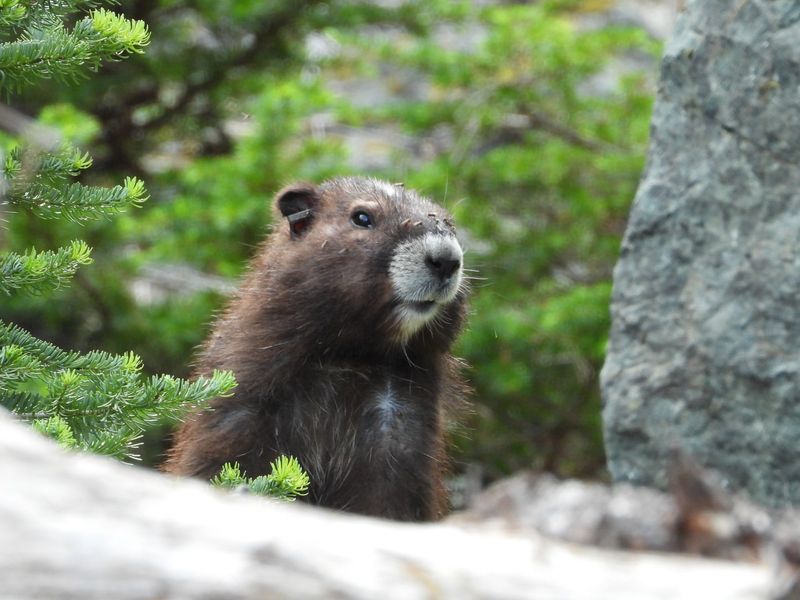
Imagine a fluffy marmot that’s so rare, it’s one of the world’s most endangered mammals. The Vancouver Island Marmot calls the subalpine meadows of Vancouver Island its home.
Logging and climate change have seriously messed with its habitat, making survival tough.
Add in a few hungry wolves and cougars, and it’s no wonder their numbers are shrinking.
12. Red Wolf
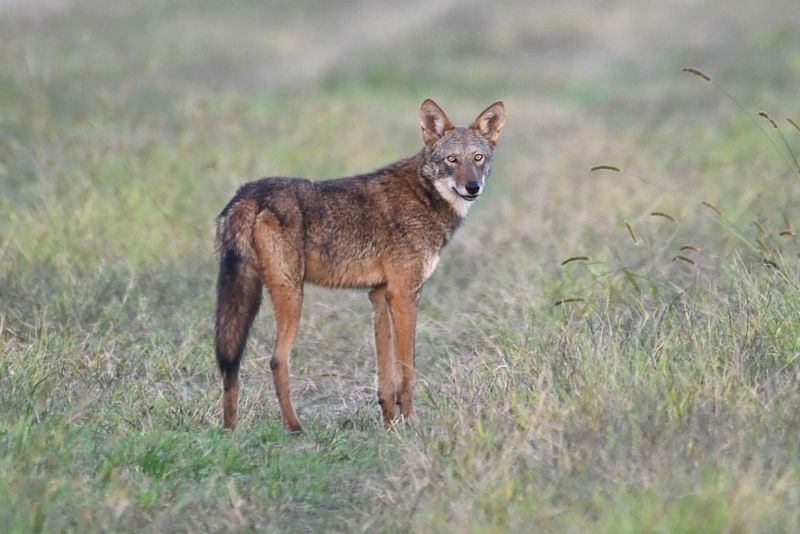
Picture a wolf with striking red and brown fur, once roaming freely across the southeastern U.S.
The Red Wolf is now one of the most endangered canids, living in tiny, isolated populations.
Habitat loss, interbreeding with coyotes, and human persecution have taken a toll on these wolves.
But despite these efforts, the Red Wolf remains critically endangered, and its survival depends on ongoing protection and restoration of its role in the ecosystem.
13. Axolotl
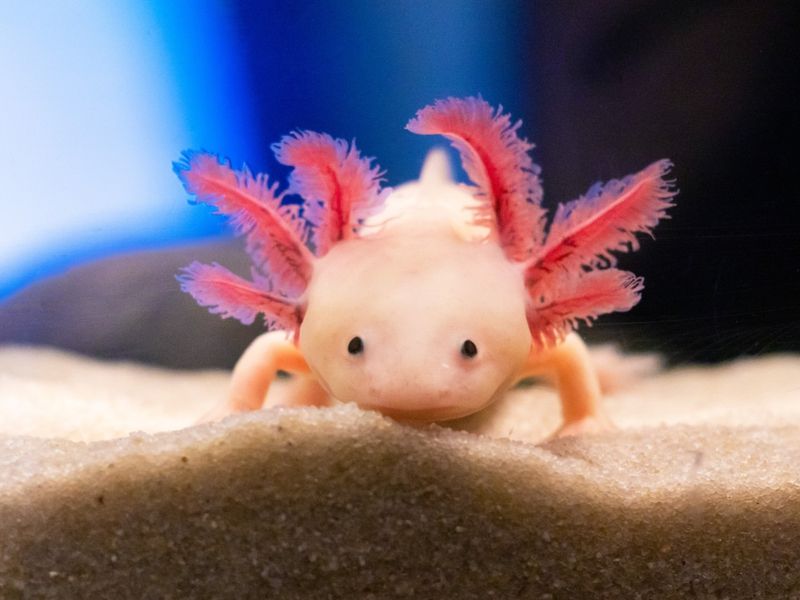
Picture an amphibian that can grow back limbs like a superhero – that’s the Axolotl!
Native to Mexico, this unique creature is critically endangered and lives in freshwater lakes.
Urbanization and pollution have destroyed much of its habitat, and invasive species make things worse.
Even though the Axolotl fascinates scientists, its population in the wild is still dangerously low. This highlights the urgent need for ongoing efforts to save this incredible species.
14. Houston Toad
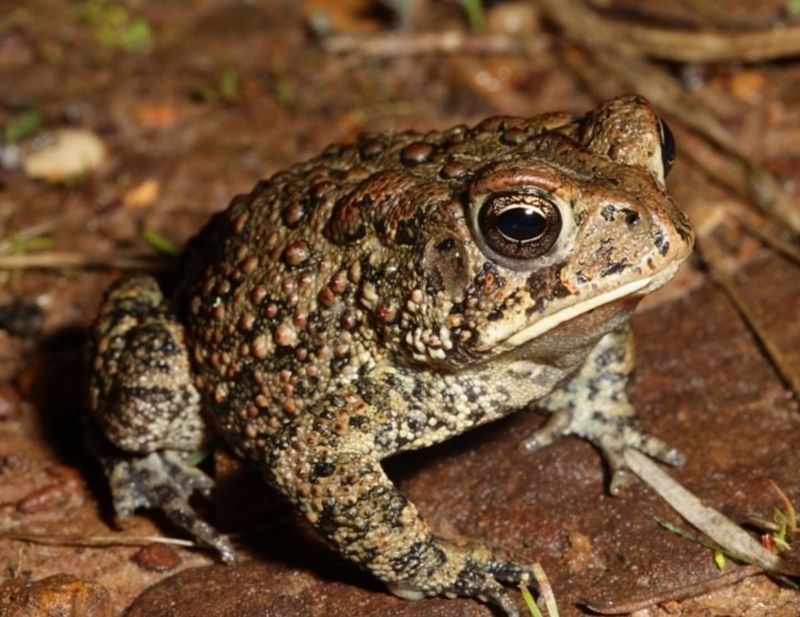
Imagine a toad with a unique call, found only in the pine forests of Texas. The Houston Toad is critically endangered, living in sandy soils in forests and prairies.
Urban development, agriculture, drought, and disease have all hit this toad hard, shrinking its habitat.
Despite these efforts, the Houston Toad’s population is still dangerously low, and it needs constant protection to survive.
15. Hickory Nut Gorge Green Salamander
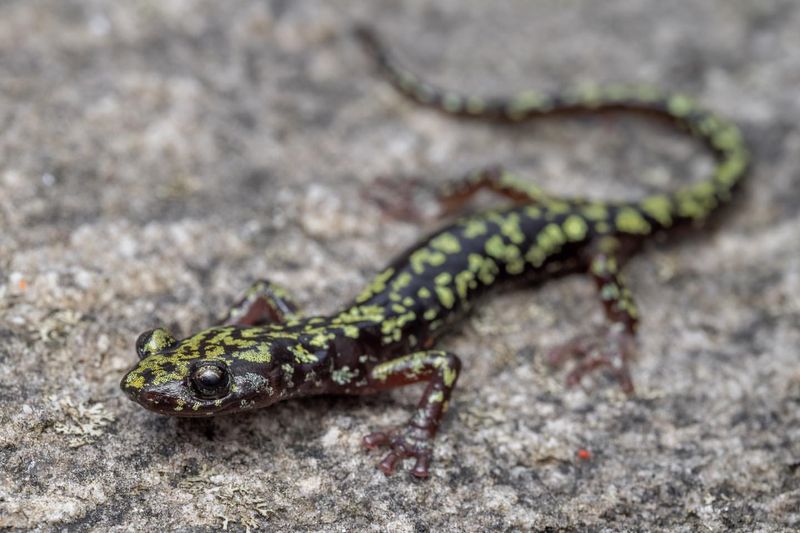
Picture a bright green salamander hiding in rock crevices—sounds like something out of a fairy tale, right?
The Hickory Nut Gorge Green Salamander, native to North Carolina, is critically endangered.
Development and logging have destroyed much of its habitat, leaving this elusive amphibian at risk.
But despite these efforts, the salamander’s numbers remain critically low, proving that continued action is essential to prevent extinction.
16. Flattened Musk Turtle
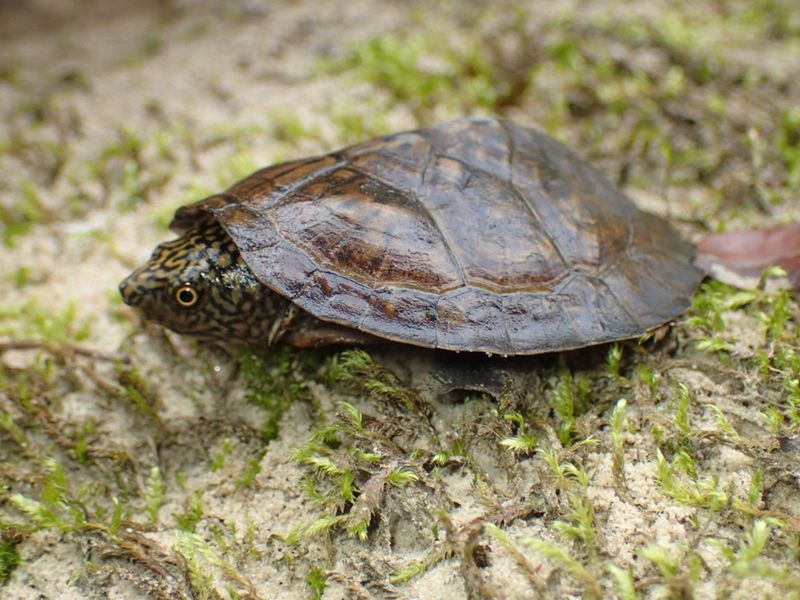
Imagine a turtle with a super flat shell, cruising through clear, slow-moving streams in Alabama.
The Flattened Musk Turtle is critically endangered and needs abundant vegetation to survive.
Pollution and habitat destruction from urban development are major threats to its survival. Conservationists are focused on protecting its habitat and reducing pollution.
Even with these efforts, the turtle’s population remains critically low, showing that ongoing conservation is crucial to its future.
17. Coahuilan Box Turtle
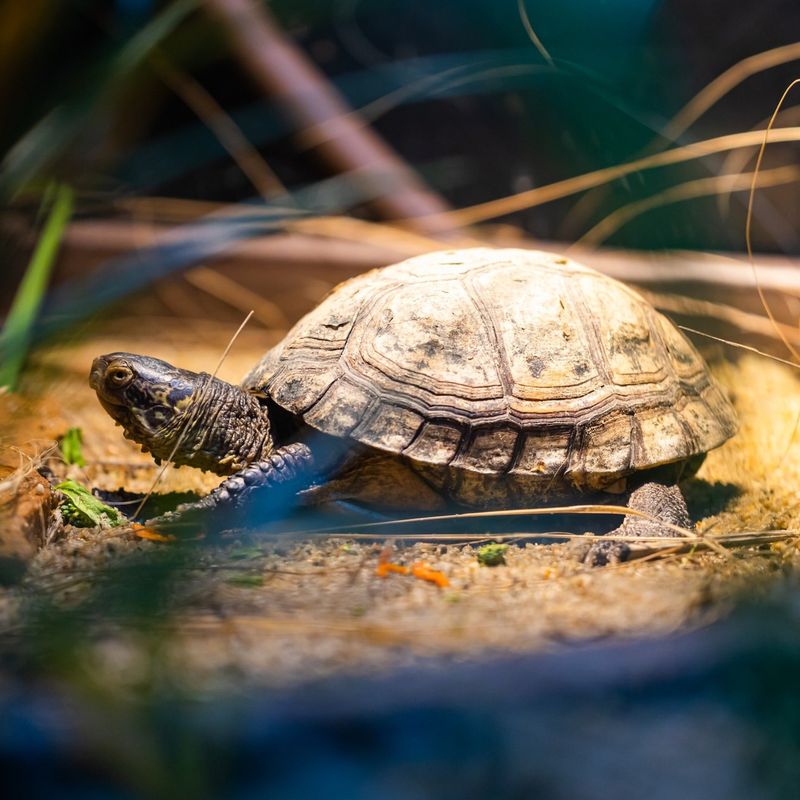
Imagine a turtle with a bright, patterned shell that calls the desert home.
The Coahuilan Box Turtle, native to northern Mexico, is critically endangered and lives in arid landscapes.
Agricultural expansion and illegal collection for the pet trade have hit its population hard. Conservation efforts focus on protecting its habitat and enforcing wildlife laws.
Even with these efforts, the Coahuilan Box Turtle’s numbers continue to drop, making it clear that more needs to be done to ensure its survival.
18. Bog Turtle
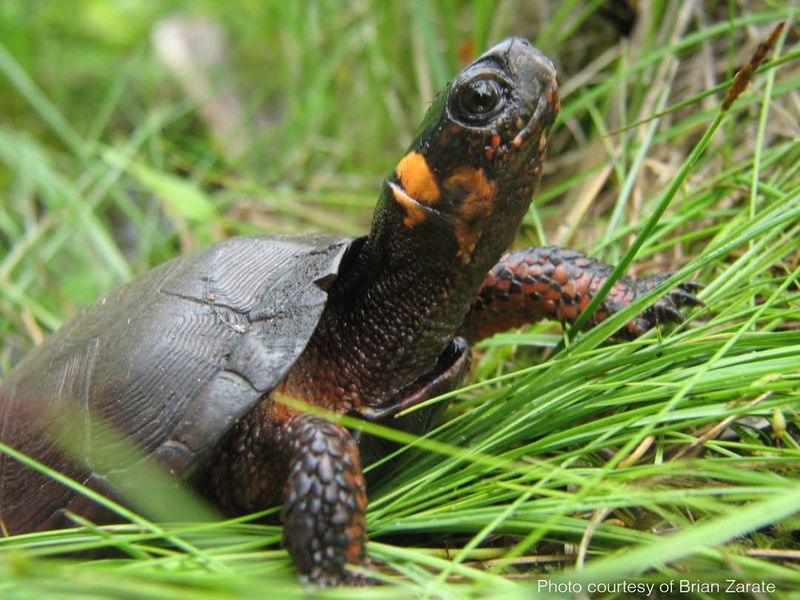
Meet the Bog Turtle, one of North America’s tiniest turtles, with vibrant orange patches on its neck.
This little guy lives in wetlands across the eastern United States but is critically endangered.
Agriculture, urbanization, and illegal collection have taken a toll on its population.
Conservationists are working on protecting and restoring habitats while educating the public to prevent illegal collection.
19. Hot Creek Toad
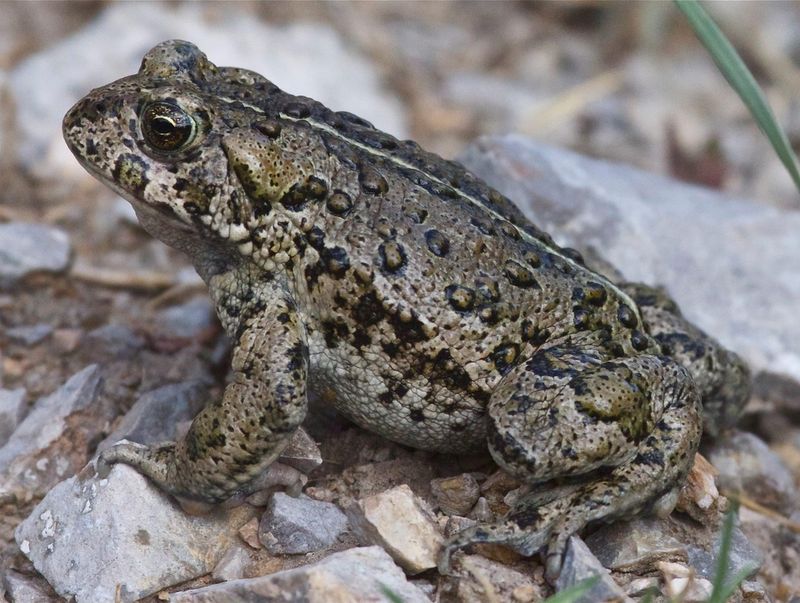
Imagine a slender salamander with pale coloring, hiding out in the freshwater springs of central Texas.
The Georgetown Salamander is critically endangered and depends on clean, clear water to thrive.
Urban development and water pollution are major threats to its survival.
20. Laysan Duck
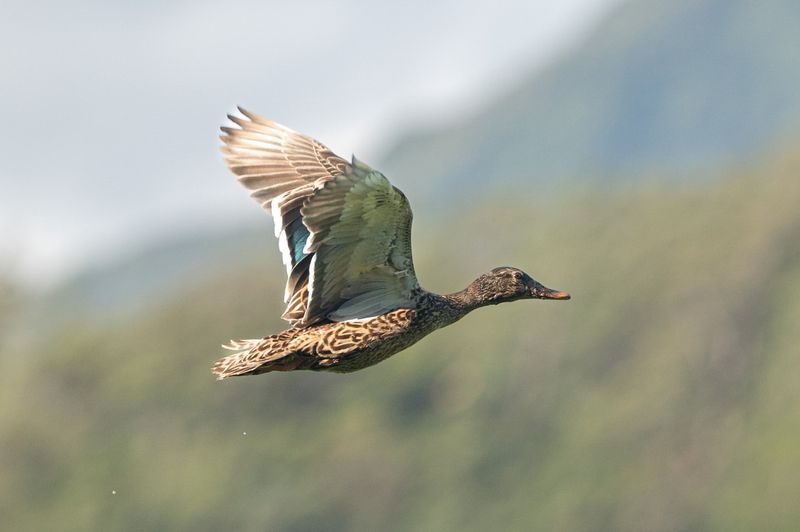
Imagine a tiny duck with brown and white plumage, living in the remote wetlands of the Hawaiian Islands.
The Laysan Duck is critically endangered and relies on these isolated areas for survival.
Habitat loss and introduced predators are huge threats to its existence.
Conservationists are focused on restoring habitats and controlling predators to give the duck a fighting chance.
21. Georgetown Salamander
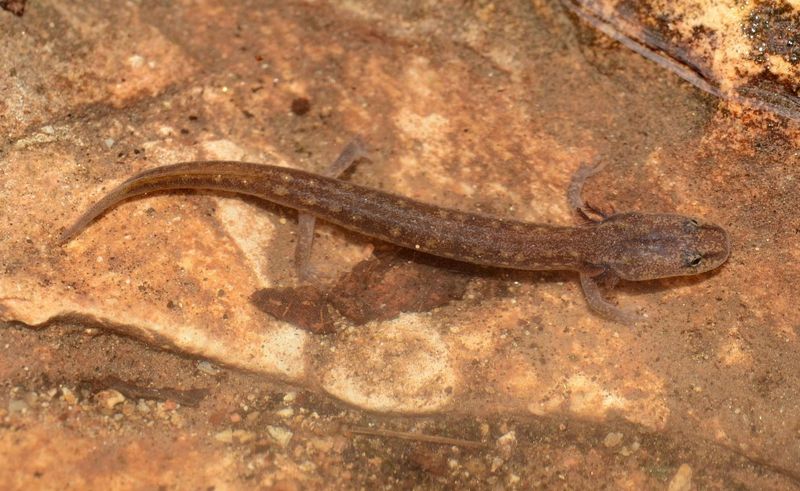
The Georgetown Salamander, native to central Texas, is critically endangered. This slender salamander inhabits clear, freshwater springs and is known for its pale coloring.
Habitat degradation due to urban development and water pollution threaten its survival. Conservation efforts focus on protecting its habitat and monitoring water quality.
Despite these initiatives, the salamander’s numbers remain critically low, highlighting the need for continued conservation actions to ensure its long-term survival.
22. Mojave Desert Tortoise
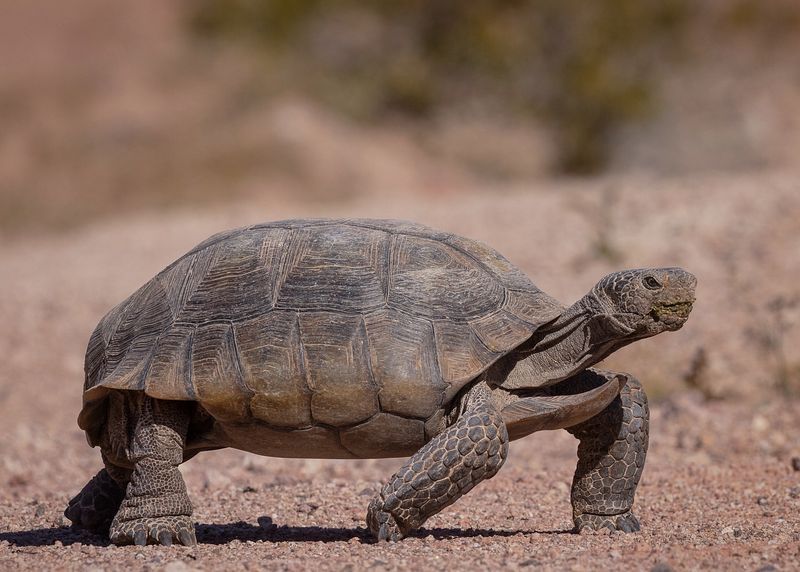
Picture a tough tortoise with a sturdy shell, burrowing away in the hot Mojave Desert.
The Mojave Desert Tortoise is critically endangered, living in the dry landscapes of the southwestern U.S.
Urban development, off-road vehicles, and disease are major threats to its survival.
Conservation efforts are focused on protecting its habitat and raising public awareness to reduce human impact.
23. Hawaiian Monk Seal
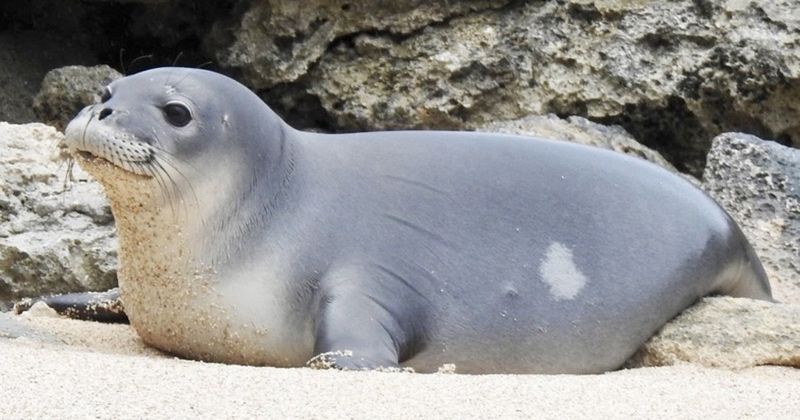
The Hawaiian Monk Seal, one of the oldest seal species on Earth, is a rare sight along the beaches of Hawaii.
Their playful demeanor and curious nature make them endearing to those who encounter them. Unfortunately, they face threats from entanglement in fishing gear and habitat degradation.
Once numbering in the tens of thousands, the population has plummeted to around 1,400 individuals today.
Conservationists are working tirelessly to protect their beach habitats and promote ocean health.
24. Kemp’s Ridley Sea Turtle
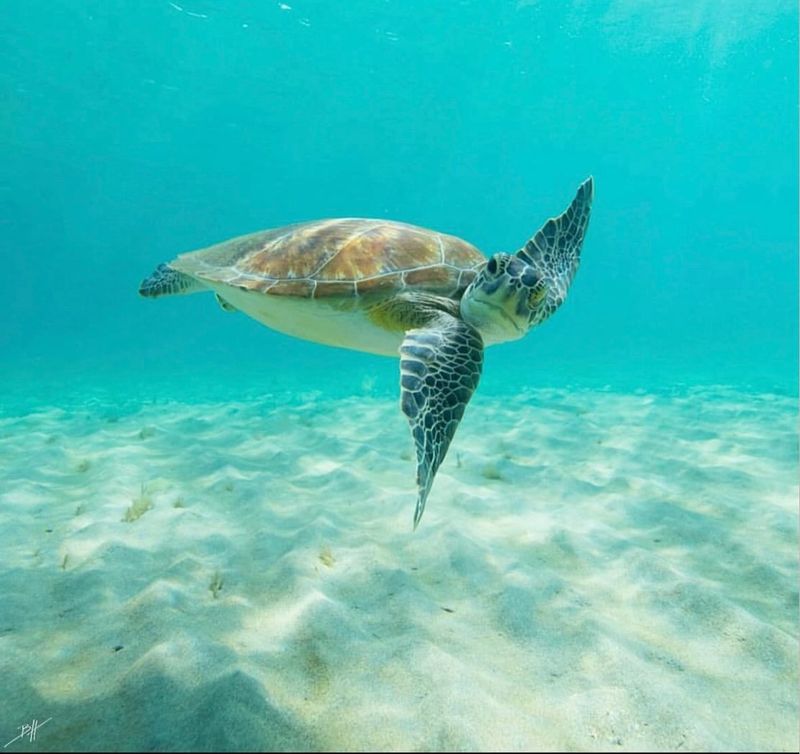
Kemp’s Ridley Sea Turtle is one of the smallest sea turtles, known for its heart-shaped shell and light gray-green color.
Found mostly in the Gulf of Mexico, this turtle is critically endangered.
The biggest threats to Kemp’s Ridley are habitat loss, poaching, and accidental capture in fishing gear. Coastal development and pollution also harm their nesting sites.
Despite these efforts, the population remains low, making every turtle vital to the species’ survival.
25. American Burying Beetle
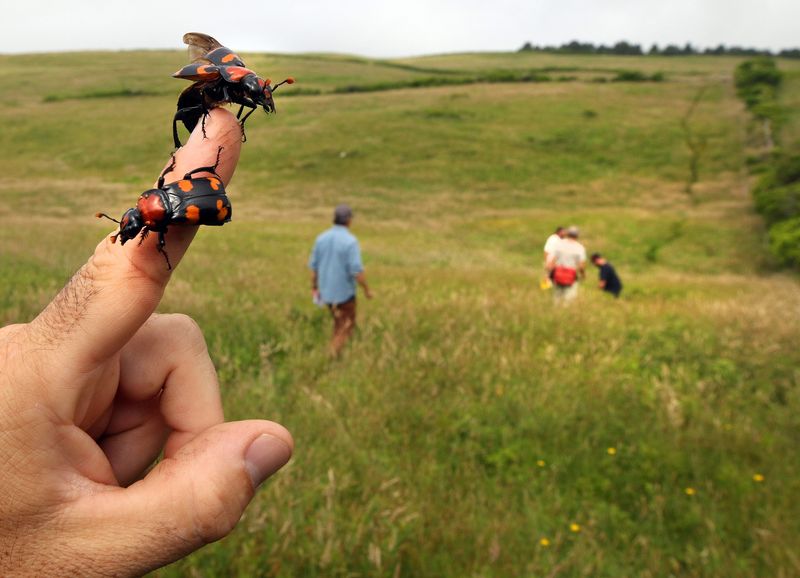
Once widespread, the American Burying Beetle now teeters on the brink of extinction. This beetle is known for its striking orange and black coloration, making it a unique sight in its natural habitat.
Interestingly, it plays a critical role in recycling nutrients by burying carcasses, which provides food for their larvae. This ecological service is vital for soil health.
Their numbers have dwindled due to habitat loss and pesticide use. Conservation efforts are crucial in preserving this keystone species. Did you know? They were once found in 35 states but are now limited to a few locations.
26. Ocelot
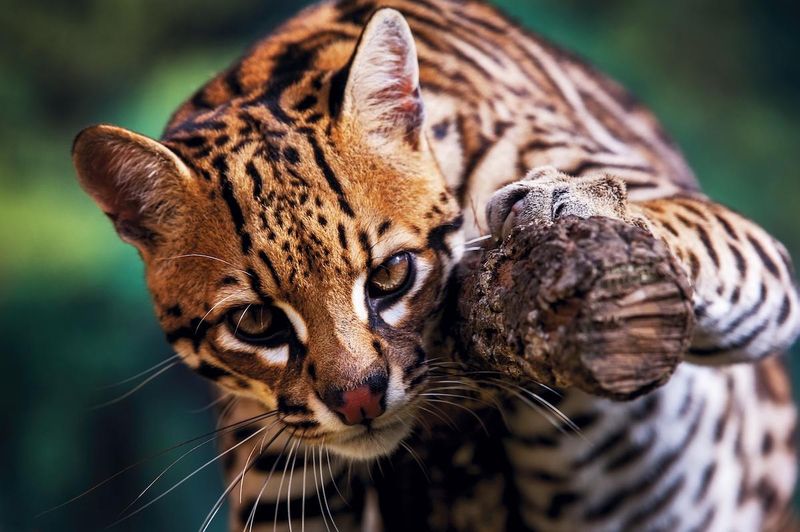
The elusive Ocelot, with its captivating spotted coat, moves silently through the dense Texas brush. These medium-sized cats are solitary creatures, often active during twilight.
Their habitat is rapidly diminishing due to urban expansion and agriculture, pushing them towards endangered status.
Despite these challenges, some individuals have been sighted in protected areas, offering a glimmer of hope. Efforts to preserve their habitat are essential. Fun fact: Ocelots were once hunted widely for their fur, but are now protected under the Endangered Species Act, helping to curb illegal hunting.

